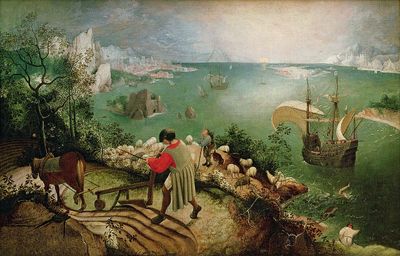on plotting

I was never taught how to plot a story. I'd taken innumerable writing courses in my youth, all the way back to my freshman year of high school; whenever I was looking for something to do, something to sign up for, hey! why not try another writing course? Later on I even did a MFA and nope, not a whisper of the P-word. Story just grows, organically; story just happens.
Which is somewhat true, for me. A lot of this project I just ... wrote, with no idea where I was going. I let the characters lead the way, and their choices helped to shape the conflicts of the story as it now stands. Another great benefit of those early scenes is that I figured out just who these folks are: in my head they're about as fleshed out as any character I've dreamed up.
But it also meant those early scenes didn't really, um, go anywhere. There were some fight scenes, some nice set pieces (I remember blocking out the first major fight scene I'd ever written, with three twining POVs and action and panic and chaos, and damn but it still holds up, the details have changed but the mechanics are still as they were five? six? years ago). But it was all on a kind of plotless continuum: nothing was ever resolved; the stakes never changed.
So over the last five years I've read a lot on plotting and structure. It's still not instinctive, but I'm a certified plotter-pantser hybrid now. More importantly, I can diagnose where I've wandered off the path into a boggy tangent (such as oh, say, five pages of characters discussing paintings in the Salon of 1742, ahem) and find my way back to the actual story.
These were some turning points in my studies:
1) Film Critic Hulk on 5-act structure. I've written about this article before, I think, but it was eye-opening at the time, and I still come back to it. Really, it's more of an infinite act model, but it felt much more natural to my writing style than 3-act. Oddly enough I've been breaking the novels up into three parts each, and when I first thought of the prequel novellas it was, of course, as a set of three ... but since I'm also thinking about all of it as one Big Book it really just means I'm telling a 15-part story. And there are acts within the parts, so perhaps it's more like a 20- or 25-act story ... except of course it's really multiple stories because each major character is following their own arc and all those acts are just their various individual arcs intertwining ...
Gah. You can see why I needed to get a handle on this stuff.
2) A lunch with Laurel Amberdine, a wonderful writer who was taken from us much too soon. She talked me through how she structures stories, which involves working out your big tentpole moments: the major emotional beats, climactic fight scenes, etc.—and then slotting in scenes around them.
3) Similarly, the snowflake method helps when I'm really stuck for how exactly to get to that next tentpole. I summarize the moment in a single sentence, say "[x] is invaded, and during the fight [y] realizes who [z] really is," and then I work backwards and forwards expanding that scene out into a more blow-by-blow description, and then I start working on what leads up to it and the immediate fallout from it. It's like I'm looking a pinpoint of light on the horizon, and then slowly that light gets brighter and brighter and I can see more of the intervening terrain.
4) Finally, Libbie Hawker's Take Off Your Pants was great to see how she develops a basic structure for an overall story; I've used it to diagnose weak spots in individual characters' arcs, and I've also got a standalone novel (someday, someday) that I outlined using this book. It's great for checking in with your fundamentals.


Member discussion